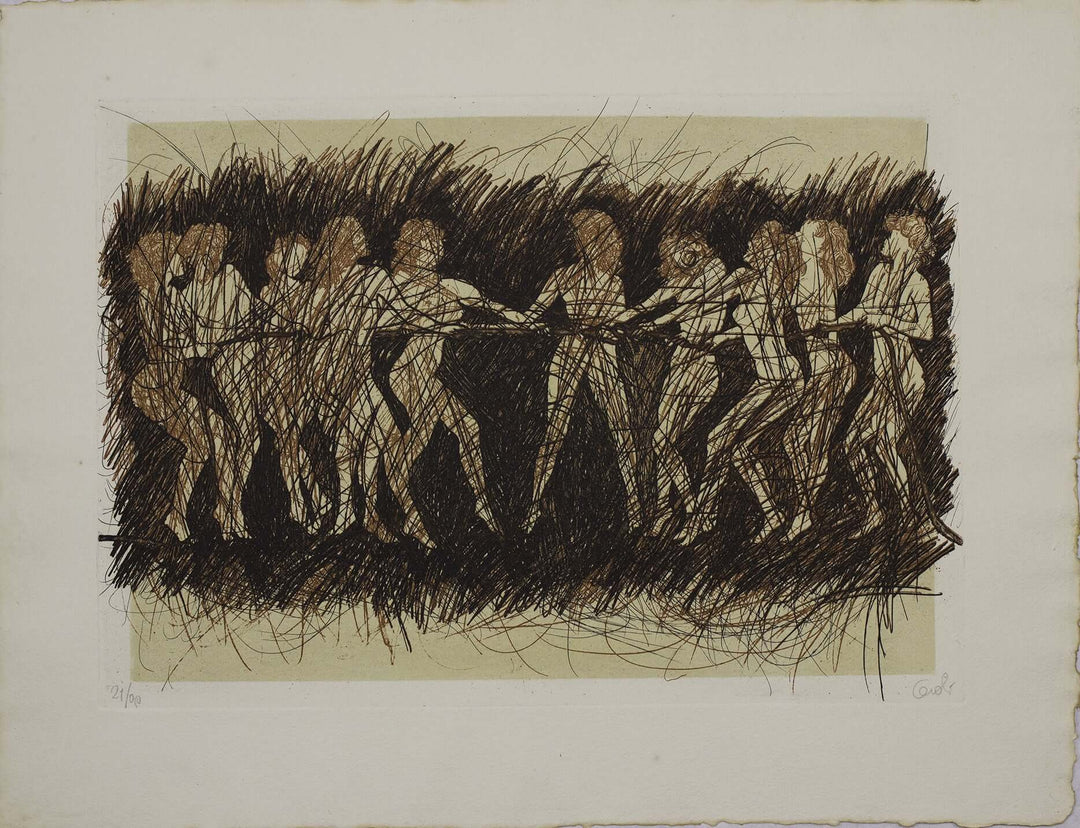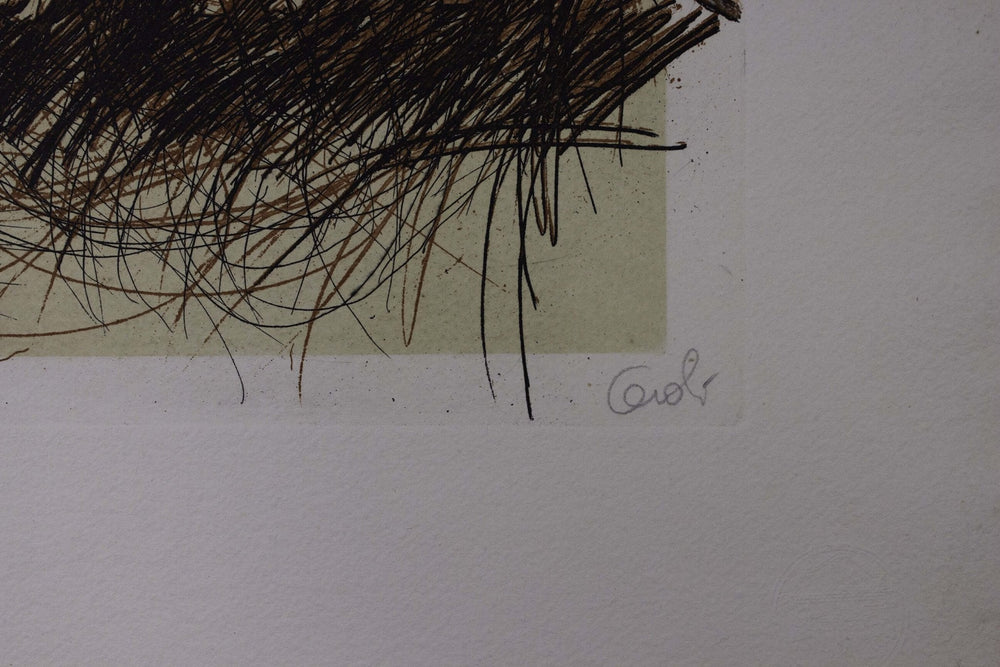MARIO CEROLI
Mario Ceroli, born in Castel Frentano (Chieti) on May 17, 1938, is one of the most original and versatile protagonists of twentieth-century Italian art. Painter, sculptor, set designer, and creator of environments, he has built an artistic language that challenges conventional classifications, blending craftsmanship and conceptualism, matter and space, architecture and theater.
At the age of ten, he moved to Rome, where he enrolled in the Art Institute almost by chance, following a family episode that marked his vocation.
He later attended the Academy of Fine Arts of Rome, where he trained under the guidance of important masters such as Leoncillo Leonardi, Pericle Fazzini and Ettore Colla, later becoming the assistant of the latter. It is in this context that Ceroli began to take an interest in ceramics and experiment with different materials, developing from the start a non-conventional plastic vision.
From 1957, he began working with wood, a material that would become the core of his expressive language. The following year he won the Prize for Young Sculpture at the National Gallery of Modern Art in Rome thanks to ceramic artworks, but it was wood that marked his definitive artistic maturation. At the end of the 1950s, Ceroli carved silhouettes, experimented with burning and assembling materials, inserting himself into the Arte Povera movement, even before it was formally theorized.
In the 1960s, influenced by Pop Art, particularly by artists like Louise Nevelson and Joe Tilson, Ceroli developed an aesthetic based on serial repetition, simplification of forms, and the use of silhouette. His artworks are populated by stylized human figures, letters, numbers, geometric objects devoid of color. He created important installations such as "The Last Supper" (1965), now at GNAM in Rome, "China" (1966), and "Sistine Box", which earned him the Gollin Prize and established him as one of the most innovative artists of his time.
From 1966 to 1967 he lived in the United States, where he exhibited at the Bonino Gallery in New York. The American stay marked an important phase of engagement with the international scene, during which Ceroli developed artworks like "Butterflies" and deepened his work on immersive spaces and environmental installations. Spectacularity and dialogue with the observer became central elements of his research.
From the 1970s, Mario Ceroli also dedicated himself to theatrical and television set design. He collaborated with directors like Luca Ronconi, designing sets for "Richard III" and "Norma" at La Scala in Milan. His ability to integrate sculpture into the stage space became a distinctive trait. Not surprisingly, many of his artworks seem to contain an implicit dramaturgy, as if they were born to be experienced and not just observed.
In the 1980s and 1990s, Ceroli continued to reinvent himself: he introduced the use of glass, ash, lead, and symbolic materials, in artworks like "The Door", "The Last Supper", "Vitruvian Man", and "House of Neptune". The artist also designed places of worship, such as the Church of San Lorenzo in Porto Rotondo and that of San Carlo Borromeo in Naples. His public installations became increasingly frequent, like the "Winged Horse" at the Rai Center in Saxa Rubra, a testimony to a poetics seeking harmony between art, space, and life.
In 2007, with the major exhibition at the Palazzo delle Esposizioni in Rome, Ceroli confirmed his central position in contemporary Italian art. In his house-museum on the outskirts of Rome, he gathers over 500 of his artworks, a place in continuous evolution, which he intends to open to the public as a testimony of a life dedicated to artistic research.
MARIO CEROLI ARTWORS
Mario Ceroli's creative path is one of the most complex in the Italian artistic panorama. Mario Ceroli's artworks span decades and disciplines: sculpture, painting, installations, set design, design. The constant feature is the use of wood and the tendency to simplify form into symbol, to transform the object into a visual icon.
An intriguing but often less explored aspect of his production concerns the world of art graphics: lithographs, etchings, serigraphs, and drawings, which complete and amplify his language. While the wooden silhouettes are imposing and physically present, the graphic artworks represent the more intimate and conceptual side of his artistic practice.
Mario Ceroli's lithographs stand out for the skillful use of line and composition. His figures stand out on the white of the paper like clear, archetypal imprints. They are often two-dimensional versions of his famous silhouettes: the Vitruvian Man, stairs, doors, but also evanescent, stylized, essential human figures. With the lithographic technique, Ceroli plays with transparency, shadow, and variation of stroke.
Etchings, on the other hand, allow him to deepen the theme of layering and matter: engraved marks that recall the structure of wood, textures evoking the gesture of the chisel, but also rarefied atmospheres, suspended between figuration and symbol. In these works, one feels the complexity of an artist who has always sought to connect the visible with the inner, the sign with the meaning.
Mario Ceroli has been able to create a strongly recognizable visual language, but always open to experimentation. And precisely in his graphic production, which translates the monumental into the intimate, one perceives the most authentic echo of a creative voice still profoundly current.









